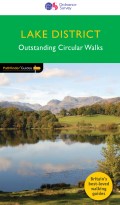Bradford on Avon, Avoncliff and Westwood
A beautiful canal and riverside walk in the heart of the Avon valley
Google Maps Open Source Maps| Statistics and Files | ||
|---|---|---|
| Start: Bradford on Avon | Distance: 4.9 miles (7.9 km) | Climbing: 109 metres |
| Grid Ref: ST 82551 60746 | Time: 2-3 hours | Rating: Easy |
| GPX Route File | Google Earth File | Bradford on Avon |
| Statistics | |
|---|---|
| Start: Bradford on Avon | Distance: 4.9 miles (7.9 km) |
| Climbing: 109 metres | Grid Ref: ST 82551 60746 |
| Time: 2-3 hours | Rating: Easy |
| GPX Route File | Google Earth File |
Ordnance Survey Explorer Map (1:25,000)
The Walk:
Bradford on Avon, where the walk begins, is an enchanting riverside town, whose streets are packed with elegant, sandy-coloured, stone-built Georgian houses. There are aslo medieval cottages, a 14th-century bridge with a domed chapel and perhaps the finest Saxon church in the country.
There have been settlements here since the Iron Age, and there are Roman roads and villas in these parts too, but it was the Saxons who gave Bradford its greatest treasure. St Laurence's Church was founded in the 7th century by St Aldhelm, first Abbot of Malmesbury, when he established a monastery here. The church is almost completely Saxon, and has a very high and narrow chancel arch, as well as rounded windows and arcading.
 St Laurence's Church, Bradford on Avon
St Laurence's Church, Bradford on Avon Kennet and Avon Canal
Kennet and Avon Canal
In medieval times, Bradford was a centre of the cloth trade, and the rows of weavers and spinners cottages date from that period. Church House and the Old Priory date from the 15th century, while the Chantry, with its fine Classical facade, was built a century later. Another building of note to be found here is The Hall, built in 1610 by clothier John Hall, which has mullioned windows and an attractive porch.
The town prospered in the 17th and 18th centuries, as the cloth it produced became famous, and a wealth of fine Georgian buildings sprang up. The mills built in the 18th century have recently been restored by the company whose premise they now are.
Initially, the walk heads south out of the town and along the River Avon to Barton Farm Country Park. For 500 years, the buildings here formed part of a huge farm belonging to and supplying the nearby monastery. The farmhouse, granary and byres have been restored and now form a complex of galleries and craft shops. There is also a magnificent 14th century tithe barn.
From here you head westwards along the towpath of the Kennet and Avon Canal. This beautifully restored waterway strewtches a full 87 miles (139 kilometres) from the River Thames at Reading to the River Avon at Bristol. The canal was completed in 1810 and was soon packed with traffic carrying local coal, iron, stone and agricultural products east of London.
When a new railway line opened between London and Bristol in 1841, the canal fell into disrepair. In 1962, the Kennet and Avon Canal Trust was set up to organise the largest civil engineering project ever undertaken by volunteers. Their work included the restoration of 86 derelict locks and 344 rotting lock gates, curing the leaks in the canal bed and rebuilding two crumbling aqueducts, pumping stations, wharves, bridges and other buildings. They also gave a new lease of life to the Caen Hill Locks, a flight of 29 locks at Devizes, the longest series of locks in England. Today, the canal is once again a working waterway.
There is a rich variety of wildlife in and near the canal, including otters, mink, water voles and badgers. There are also many beautiful and unusual plants to be discovered growing along the banks and in the surrounding woods.
 Westwood Manor
Westwood Manor Town Bridge, Bradford on Avon
Town Bridge, Bradford on Avon
As you approach the hamlet of Avoncliff, the air is filled with the roar of water as it gushes over a great weir that powered two mills. The one on the north bank, which still retains its breast-shot wheel, was once used for fulling (scouring) woollen cloth. In the 19th century it became a flock mill, recycling old woollen materials. The other mill has a brick and stone chimney suggesting that water power gave way to coal once the canal had been built.
The Avoncliff Aqueduct, which carries the canal over the river, was built by John Rennie between 1796 and 1798. Now restored, it retains its elegant Georgian balustrades.
Heading south again, you come to Westwood Manor, a small stone built 15th century house with a friendly, homely atmosphere. It is now the property of National Trust. Inside there are beautiful Jacobean plaster ceilings; outside the fine gardens have some excellent topiary. The church at Westwood dates from the same period and has an impressive tower.
When back in Bradford on Avon, make a point to visit the 14th century bridge over the River Avon. While its domed chapel was originally built for travelling pilgrims; in the 17th century, it became a two-cell lock up for lawbreakers.
Acknowledgments: Text derived from the Out and Out Series; Discovering the Countryside on Foot. Pictures courtesy of Wikipedia.
Feedback and Suggestions: To suggest a link for inclusion on a this page please complete the Walking Englishman Feedback Form. Thank you.







